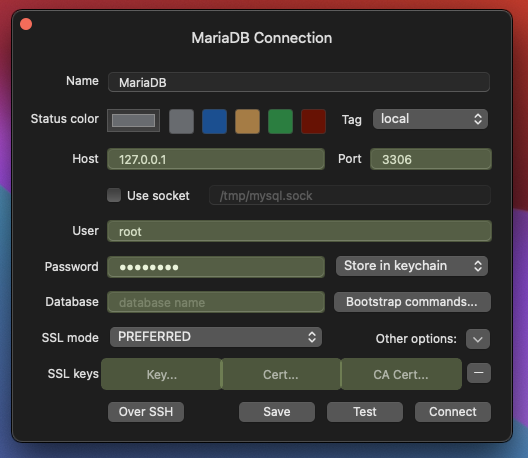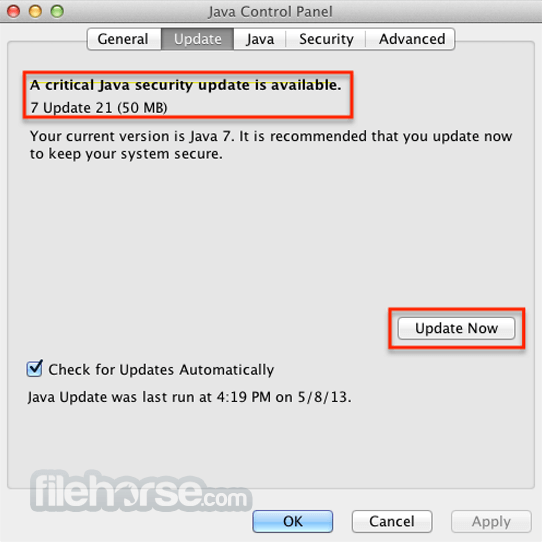Mysql_secure_installation Mac
WordPress, the most popular content management system can be used to create all kind of websites… from personal blogs to eCommerce to almost any types of websites… In order to run WordPress, you’ll need to install a webserver, a database server and PHP server scripting modules…
99% of the time WordPress will be installed on a Linux system, including Ubuntu with either the LAMP or LEMP stack… However, there are some open source projects today that are making it possible to install WordPress on Microsoft Windows desktops and servers…
Snipe-IT is a free and open-source, cross-platform, feature-rich IT asset management system built using a PHP framework called Laravel.It is a web-based software, which enables IT, administrators, in medium to large enterprises to track physical assets, software licenses, accessories, and consumables in a single place.
One such project is XAMPP… XAMPP is a completely free, easy to install Apache distribution containing MariaDB, PHP, and Perl.
This brief tutorial shows students and new users how to install WordPress with Apache2, MariaDB and PHP on Microsoft Windows 10 or Server computers…
- Mysqlsecureinstallation Mariadb will always refuse the password because the current user is not root. So you need to call them with sudo (or as the root user on your machine) So locally you just want to use: sudo mysql. Sudo mysqlsecureinstallation When moving from mysql to mariadb it took I will for me to figure this out.
- 「mysqlsecureinstallation」コマンドを利用すると、対話形式にrootパスワード変更や、その他初期設定がかんたんにおこなえます。こちらを利用して設定をおこないましょう。 $ mysqlsecureinstallation Securing the MySQL server deployment.
- # systemctl restart mariadb # mysqlsecureinstallation The mysqlsecureinstallation will take you through a number of steps, including 'Set root password? Just say 'y' and give it a password. Answer the other questions as you wish.
To get Windows on Windows, follow the steps below:
Step 1: Download XAMPP Package
To get XAMPP installed on Windows, head over to Apache Friends website and download the Windows version
Step 2: Install XAMPP
After downloading the Windows version, you should be prompted install the package… You’ll need to install with Apache, MySQL, PHP and Perl as shown in the image below… Complete the installation and continue to the next step…

Accept the default installation directory: C:xampp
Step 3: Configure XAMPP
Now that the package is installed, open XAMPP and start up Apache and MySQL services as shown in the image below…
After starting Apache2 and MySQL, these servers should be running… to test whether Apache is running, open Internet Explorer on the host machine and type the URL below:

This should bring up Apache XAMPP default page…
To validate that MariaDB is installed and functioning, open the Shell command prompt on the right of XAMPP Control Panel. This should launch the command shell… then type the commands below:
mysql
This should you onto MariaDB database server.
To secure MariaDB database server, open the Shell command windows again, then type the commands below…
perlbinperl.exe mysqlbinmysql_secure_installation.pl
When prompted, answer the questions below by following the guide.
- Enter current password for root (enter for none): Just press the Enter
- Set root password? [Y/n]: Y
- New password: Enter password
- Re-enter new password: Repeat password
- Remove anonymous users? [Y/n]: Y
- Disallow root login remotely? [Y/n]: Y
- Remove test database and access to it? [Y/n]: Y
- Reload privilege tables now? [Y/n]: Y
Step 4: Create WordPress Database
While still in the Shell command windows, type the commands below to logon to MariaDB database server… type the password you enter above when prompted…
mysql -u root -p
Then create a database called wpdb
CREATE DATABASE wpdb;
Create a database user called wpuser with new password
CREATE USER 'wpuser'@'localhost' IDENTIFIED BY 'new_password_here';
Then grant the user full access to the database.
GRANT ALL ON wpdb.* TO 'wpuser'@'localhost' IDENTIFIED BY 'user_password_here' WITH GRANT OPTION;
Finally, save your changes and exit.
Step 5: Download WordPress Content
Now that WordPress database has been created, go and download WordPress content from its download page.
After downloading the WordPress file, extract it into the C:xampphtdocs
You can delete all the files and folders in there and extract WordPress content that that folder… the htdocs should look like this:
Mysql Secure Installation Macos
When done, open Internet Explorer and type

How password protect zip file mac. This time you should see WordPress default setup page.
Type in the database connection info and continue
Create WordPress admin account and continue
After installing, logon to WordPress admin dashboard…
~Enjoy!
You may also like the post below:
last modified September 10, 2020
Spring Boot MySQL tutorial shows how to use MySQL database in a Spring Bootapplication.
Spring is a popular Java application framework for creatingenterprise applications. Spring Boot is an evolution of Springframework which helps create stand-alone, production-grade Spring basedapplications with minimal effort.
MySQL
MySQL is a leading open source database management system. It isa multi-user, multithreaded database management system. MySQL is especiallypopular on the web. It is one part of the very popular LAMP platform,which includes Linux, Apache, MySQL, and PHP. MySQL database is availableon most important OS platforms. It runs on BSD Unix, Linux, Windows, and Mac.
MySQL setup
We are going to show how to install MySQL database on a Debian Linux system.
This command installs MySQL server and related packages.
These two commands are used to start and stop MySQL.
We check the status of the database with systemctl status mysqlcommand.
Now we need to reset the root password. We start the mysql command line tool.(The server must be running.) We connect as root.
We set a new password for root.
We can use mysql_secure_installation to increase security of MySQLserver. We are given the choice to improve the MySQL root password, removeanonymous user accounts, disable root logins outside of localhost, and removetest databases.
We create a new testdb database.
We create a new MySQL user and grant it privileges to the testdbdatabase.
Creating MySQL table
Now we are going to create a new MySQL table called cities.
This is SQL to create the cities table.
With the source command, we execute the SQL statements.
Spring Boot MySQL example
The following application is a simple Spring Boot web application, which usesMySQL database. We have a home page with a link to display data from a databasetable. We use Freemarker templating system to join data with HTML.
This is the project structure.
Spring Boot starters are a set of convenient dependency descriptors whichgreatly simplify Maven configuration. The spring-boot-starter-parent has some common configurations for aSpring Boot application. The spring-boot-starter-web is a starterfor building web, including RESTful, applications using Spring MVC. Thespring-boot-starter-freemarker is a starter for building MVC webapplications using Freemarker views. The spring-boot-starter-data-jpa is a starter for using Spring Data JPA with Hibernate.
The mysql-connector-java dependency is for the MySQL database driver.
The spring-boot-maven-plugin provides Spring Boot support in Maven, allowing us to package executable JAR or WAR archives. Its spring-boot:rungoal runs the Spring Boot application.
In the application.properties file we write various configurationsettings of a Spring Boot application. With the spring.main.banner-mode property we turn off the Spring banner. With the logging.level.org.springframework we set the logging level for spring framework to ERROR.In the spring datasource properties we set up the MySQL datasource.
This is the City entity. Each entity must have at least twoannotations defined: @Entity and @Id.
The @Entity annotation specifies that the class is anentity and is mapped to a database table while the @Table annotationspecifies the name of the database table to be used for mapping.
The primary key of an entity is specified with the @Id annotation.The @GeneratedValue gives a strategy for generating the values of primary keys.
By extending from the Spring CrudRepository, we will havesome methods for our data repository implemented, including findAll().This way we save a lot of boilerplate code.
ICityService provides the findAll() contractmethod declaration to get all cities from the data source.
CityService contains the implementation of the findAll() method. We use the repository to retrieve data from the database.
CityRepository is injected.

The findAll() method of the repository returns the list ofcities.
MyController class is annotated with @Controller.
Update mac os yosemite to mojave. If you’re using macOS Mojave or later, choose Apple menu System Preferences, then click Software Update. If you’re using an earlier macOS, use the App Store instead. Learn how to download and install macOS Big Sur Go to the App Store. MacOS Mojave (/ m oʊ ˈ h ɑː v i, m ə-/ mo-HAH-vee) (version 10.14) is the fifteenth major release of macOS, Apple Inc.' S desktop operating system for Macintosh computers. Mojave was announced at Apple's Worldwide Developers Conference on June 4, 2018, and was released to the public on September 24, 2018. If you haven't updated to Catalina yet, read on to find out how to update to Catalina or Mojave from High Sierra, Sierra, El Capitan, Yosemite, or even older version of Mac OS X below.
We inject an ICityService into the countryServicefield.

We map a request with the /cities path to the controller'sfindCities method. The @GetMapping annotation maps a GET request to the method. The model gains a list of cities and the processing issent to the showCities.ftlh Freemarker template file.
In the showCities.ftlh template file, we display the data inan HTML table.
Mysql_secure_installation Access Denied Root
In the index.html there is a link to show all cities.
The Application sets up the Spring Boot application.The @SpringBootApplication enables auto-configuration andcomponent scanning.
After the application is run, we can navigate to localhost:8080.
Mysql_secure_installation Access Denied Mac
In this tutorial, we have showed how to use MySQL database ina Spring Boot application.
Mysql_secure_installation Mysql 8
List out all Spring Boot tutorials.

